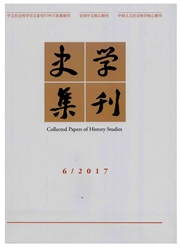

 中文摘要:
中文摘要:
殖民地时期,在墨西哥中央地区的农村,庄园与村社之间形成了一种虽不平等、但相互依存的关系。殖民地后期,由于人口数量回升、商品关系的发展,大庄园利润上升,村社农民地位下降。独立后,由于大庄园主因经济困难而被削弱,墨西哥的农业从主要满足大城市市场的大庄园商品性生产为主,转向主要以满足自身消费和部分满足地方市场的村社、租佃农、小农场生产为主,出现了一种向“小农制”转变的农业发展模式。这一变化不仅仅给农民带来了直接的经济利益,而且为快速的经济增长和更加平等的分配创造了条件。但19世纪末,在迪亚斯的独裁统治下,墨西哥的农业重新回到了大庄园商品生产的模式,下层农民的处境不断恶化.阶级矛盾日趋尖锐.终于导致了1910年的墨西哥堇命.
 英文摘要:
英文摘要:
During the colonial time, an unequal but symbiotic relation between haciendas and ejidos was established in the central area of Mexican countryside. In the later colonial time, owing to the growth and the development of commercial economy, the profit of the haciendas rose, but the peasants in the ejidos were weaken. After independence, with the economic difficulty of the haciendas, the agricultural production in Mexico was transformed from mainly the commercial economy for great cities to the economy for the self- consumption and partly for the local markets. Replaced the haciendas, the ejidos, tenants and rancheros took control of the economy of the countryside. A kind of petty farmer economy came into being. The positive change provided the foundation of rapid economic growth and equal distribution as well as brought benefit to the peasants. However, in the late 19thcentury, under the authoritative rule of Porfirio Diaz, Mexican agricultural production was controlled by the haciendas again, and the condition of the peasants deteriorated, which was the main cause of the revolution in 1910.
 同期刊论文项目
同期刊论文项目
 同项目期刊论文
同项目期刊论文
 期刊信息
期刊信息
